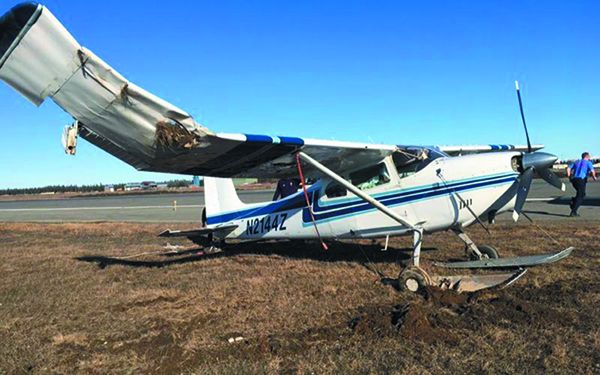If you’ve been following our coverage of the aircraft insurance market you’ll know that it has—as we predicted a year ago—“hardened.” That’s a broker buzzword for high premiums, demands for frequent training and medical certification, longer transition instruction when moving up in aircraft and in some cases, non-renewal of policies even if you haven’t had major claims.
Based on the calls and emails we get here at the magazine, a wide swath of the market has been hit in some way, but older pilots and those who fly turbines, high-performance twins and taildraggers are especially being targeted. Some buyers are making deals on aircraft only to find out they can’t insure them.
The show never went on, of course, but we planned a live insurance roundtable discussion at AirVenture Oshkosh this past summer with a few of the most seasoned members of the aircraft insurance industry. Since the insurance squeeze is such an issue for so many pilots we couldn’t let it go, and ended up doing the roundtable virtually over Zoom. What’s going on with the market, and what can you do to stay insured?
To find out we rounded up Marci Veronie from Avemco, our own in-house insurance expert and seasoned broker Jon Doolittle from Hartford, Connecticut-based Sutton James Optisure and Scott “Sky” Smith from Sky Smith Specialty Insurance in Iowa, who specializes in insurance for experimental aircraft. Here’s a recap of the candid discussion.
PLAN FOR BIG INCREASES
Scott Smith confirmed a trend that we’ve been hearing about for a while, and that is some premiums are increasing in a big way.
“We’ve been telling our customers that rates have gone up between 30 and 300 percent, and while that upper end isn’t exactly typical, we’ve seen some pretty high rate increases even long before the COVID-19 pandemic,” he said. It’s not just across-the-board rate hikes, according to Smith. There has been a major shift in underwriting guidelines and requirements, and those with open claims who are unlucky enough to have another wreck could be in for real heartburn. He told a story about a retractable-gear Cessna that had an open claim, and then subsequently had a gear-up landing. “No other company would touch this pilot, and his premium went from a bit over $1000 to north of $5000,” he said. The problem is compounded if a bank owns the aircraft, which is often the case.
Jon Doolittle at Sutton James Optisure has been brokering aircraft insurance to loyal customers for over 30 years and sees the same pattern, and admits that many of his long-term clients are simply getting old. In a market that’s taken one of its turns, he’s finding it difficult to keep aging pilots insured. “The problem with being in this business for a long time is that suddenly some of your loyal customers are now 80 years old. This market swing is catching older pilots and this is making it difficult to get clients higher limits of liability,” Doolittle admitted.
He starts counseling his clients when they’re around 58 years old about the importance of sticking with a company because according to him, insurers are looking for long-term customers—not clients who change insurers every year to save a few bucks. “Sooner or later you make the decision to stop flying or your insurer will make the decision for you,” he said. And to stretch the inevitable as long as possible, Doolittle might have a hard talk with an aging client and reason that if they want to stay in their current aircraft for a certain amount of time, they might have to accept slightly higher premiums for the sake of staying loyal to the insurer.
Meanwhile over at Avemco—a company that sidesteps brokers and deals directly with clients—guidelines might be changing, but according to Senior Underwriting VP Marci Veronie, the bottom isn’t exactly falling out.
“We too have heard the same stories of pilots struggling with higher rates and dropped policies with other companies, but at Avemco it’s business as usual. We haven’t changed our guidelines, pricing or underwriting philosophy,” she said. On the other hand, Veronie admitted that while Avemco (which doesn’t insure turbine aircraft or write so-called “smooth” policies) has been taking on some of the clients rejected from other companies, it’s protecting current customers who have been loyal to the company—in some case as long as 30 years. That means there are no sweet deals to be had, or any shortcuts when it comes to underwriting policies. “The price is the price, the guidelines are the guidelines and that’s why we have been in business for 60 years,” she told us. When put on the spot about older pilots seemingly being singled out by the current insurance market (and not just Avemco), Veronie made it clear that she has years and years of data that shows older pilots are breaking airplanes for the same reasons now as they always have. While it’s tempting to dive into the NTSB reports to see if senior pilots are habitually wrecking aircraft, the kinds of common wrecks to include gear-up landings, runway loss of control and surface prangs might not make the reports. But there are specific risks, including rusty and or aging pilots who infrequently go out in taildraggers.
“We continue to see tailwheel pilots have groundloop-related accidents—and we aren’t seeing 70-year-olds groundloop more than 20-year-olds,” Veronie said. When asked if the company has grown less tolerant of claims related to groundlooped taildraggers, she said the company wasn’t, and it won’t refuse to pay a claim (or drop a client) unless the insured has done something crazy—drugs, alcohol, reckless flying … those kinds of things. On the other hand, you’ll likely lose your claim-free discount, which could be as much as 20 percent of the premium.
SEAPLANES AND HOMEBUILTS
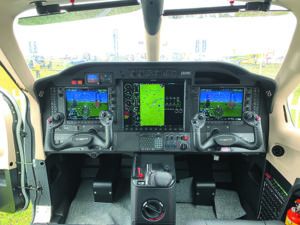
Unanimously, the group admitted that rates for these aircraft can be extremely high and some might not be insurable at any cost. Avemco can help ease the pain by reducing the premium if you take the floats off and install the wheels during the off season, if you operate in northern climates. Yes, skis are the same as wheels in the eyes of Avemco and most insurance companies we spoke with, so skis won’t alter the cost.
“The rates for insuring seaplanes are high, and my advice for someone who eventually wants something like a Cessna 206 on floats is to start with something you can insure yourself for any physical damage,” said Doolittle. Think simple, like a Luscombe, as one example. Buy liability insurance and take on the risk yourself if you break it. Build the time, get the experience and hopefully you’ll eventually be less of a risk when it’s time for something more complex. The point is that no underwriter will accept the risk of an inexperienced seaplane pilot at the controls of a late-model Cessna 206 or even an older Cessna 185, for example.
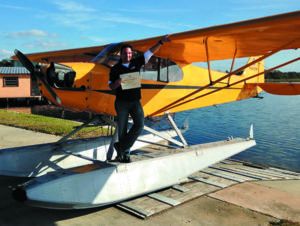
As for experimentals and homebuilts, we looked extensively at the market for insuring them in the September 2020 issue of Aviation Consumer. The group confirmed what we already knew, and that is pilots are building kit aircraft in large numbers. Perhaps it’s the downtime created by the pandemic, or the fact that kitplanes are more advanced and easier to build than ever. But that doesn’t mean they are a sure thing from an insurance standpoint.
“A lot of people are building their first airplanes, and many are more than 70 years old. They have the time and the money to build them, but the problem is they may only have flown 100 hours over the past 10 years and they end up shocked by the rates to insure the kit,” Smith said. His advice is to keep it simple—build a fixed-gear plane (with a tricycle configuration) and avoid rare or one-off kits.
Underwriters look at fleet size in terms of available support, training and proven designs. In our discussion it was clear that Van’s Aircraft, Sonex Aircraft and Zenith Aircraft are among the most favored by underwriters. Which types are frowned upon? Retrac, pressurized and turbine-powered homebuilts. Unless you have a lot of time in all of the above and have lots of hours (1500 seems to be the magic number), plus an instrument rating, underwriters will likely avoid you like the plague.
“We’re finding there are some companies that won’t even take on experimental aircraft, and those that do insure them refuse to take on certain models. It all comes down to how much you’re willing to pay for a premium,” said Smith.
Moreover, you may have to self-insure for the first 50 hours of flying the completed project. And, consider buying a builder’s policy to protect your investment while you work on it, and find a skilled instructor.
TURBINES AND LSA
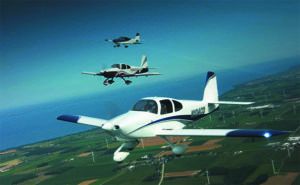
These models are on the opposite ends of the food chain, but they both can be problematic when it comes to insurance. According to Doolittle, not much has changed for some fragile LSA models.
“It’s been more of the same. The thing that aggravates the LSA sector is that getting replacement parts is difficult (and expensive) and underwriters know it,“ said Doolittle. Discontinued models like the Cessna Skycatcher and Piper Sport came up in discussion as models that could be down for a while after a wreck. Smith recalled a client who had to put a Piper Sport in the experimental category just so he could fix it and get it flying himself. Who has the time for that?
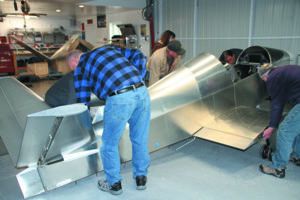
Transitioning to an LSA? When it comes to insurance leave your ego at home. Underwriters will demand more transition time than you might expect. “We had a retired airline pilot who wanted a policy for a new LSA and despite having 20,000 hours total time, we still required a minimum of five hours dual instruction, plus a flight review in the aircraft. It was a take-it-or-leave-it deal and he took it. He called back after a few hours and admitted that the airplane had humbled him,” said Veronie. No, sir, the control forces of a 1300-pound LSA feel nothing like that of a 737.
Going the other direction and have your sights on the cockpit of a turbine? Bring your A-game and be committed to training and willing to compromise. Turbine conversions are extremely difficult, so your best bet might be a production model.
“The owner-flown jet and turboprop market is where all the hand-to-hand fighting is. Liability limits are being cut in half, premiums are doubling, and it’s sort of failure of the insurance business to get this far behind the curve that we can’t provide the product at a reasonable price,“ Doolittle admitted. He also said that many new turbine customers have some kind of insurance claim history. Is it time to make up for the loss when they buy coverage for a jet? It’s something to think about.
HARSH REALITIES
To be clear, underwriters want clients to fly more, train more and participate in the FAA Wings program. If you’re a senior pilot, your insurer might suddenly require a copilot—even in single-engine pistons. Consider stepping down to something easier to fly.
As Smith put it, “High-performance aircraft, including turbines, may be the big-buck business insurance companies want, but they may not want the pilot that goes along with the policy.”

